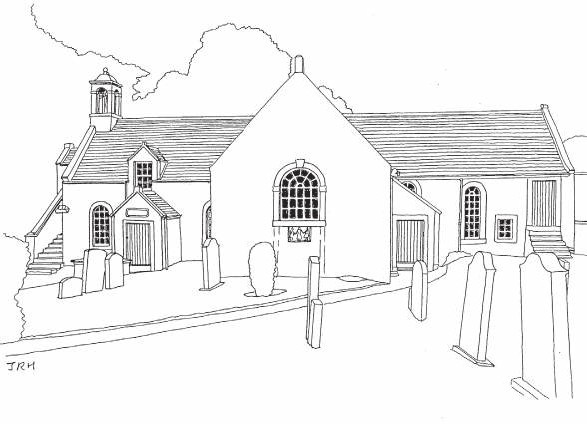A model for other church buildings
John R Hume reflects on the rich history of a Borders church.
THE parish of Fogo is in what was historically the county of Berwickshire, now part of Scottish Borders.
The parish was given by David I in the 12th century to the Earl of Dunbar, and in 1147 Earl Gospatrick in turn granted it to the Abbey of Kelso. There was a Roman camp near the south-western edge of the parish, which has been for centuries used for arable farming. The parish church is set in the ‘kirkton’ of Fogo, and was described in the 1890s as an ‘old and picturesque ivy-mantled building. It had been enlarged in 1853, and contained 278 sittings. At that time the population was just over 400.
The present church building incorporates the lower courses of the rectangular 12th-century structure. In 1671 the Trotter of Charterhall loft was constructed in the west end, and the loft front of that date survives, though relocated. A south aisle was added soon after 1677 (when the Hog of Harcase loft was inserted into the east end) to create a T-plan. The upper walls were rebuilt in 1683, with both landowners’ lofts reached by external stairs. Further rebuilding took place in 1775, when the present round-headed windows were installed.
Internally, there is a fine pulpit on the north wall, with an ogee-domed sounding board. Some of the pews are box pews. In the former burial aisle at the east end (now the vestry) is part of a 13th-century grave-slab, evidence of the early history of the place. A unique feature is a slab carved with three female figures bearing scrolls with the text ‘We Three Served God, Lived in his Fear, and Loved Him who bought us Dear’. This can be seen in my drawing below the roundheaded window in the south aisle.
The small scale of the building and the closeness of the lofts to the pulpit give it a very intimate feeling, well-shown in a superb photograph of the interior included in Kitty Cruft, John Dunbar and Richard Fawcett’s book, The Buildings of Scotland: Borders. As hinted at in that volume, this little building is of national importance as a small rural church in a rich agricultural area. It is well worth travelling a long way to experience it, preferably during a service, to appreciate the special atmosphere when the minister is so close to the worshippers. My drawing, showing the building from the south, does no more than hint at the special quality of Fogo.
In common with many rural areas Fogo has lost population since the Second World War as a result of the mechanisation of arable farming. This has resulted in linkages between rural congregations, and in some cases, unions. Fogo and Swinton were linked from 1967, and united in 1976, when the united parish was linked with Leitholm. In 1978 there was a further linkage with the neighbouring parishes of Ladykirk and Whitsome (linked since 1955. In the mid-2010s the linked congregations were placed under the ‘Guardianship’ of the Presbytery of Duns. The Fogo congregation has thrived under this regime, and an agreement has been reached to set up a local charitable trust, who would lease the church building from the General Trustees. The congregation will continue to worship in the building, but it will be available for other community purposes. This approach is warmly to be welcomed, and it is hoped that it will prove a model for other church buildings and their congregations in what are now sparsely populated parts of Scotland. It is worth bearing in mind that for many centuries most of the land-mass of Scotland was very thinly populated, and that the parish churches established in the 12th century were vital social centres, as they remain today.
